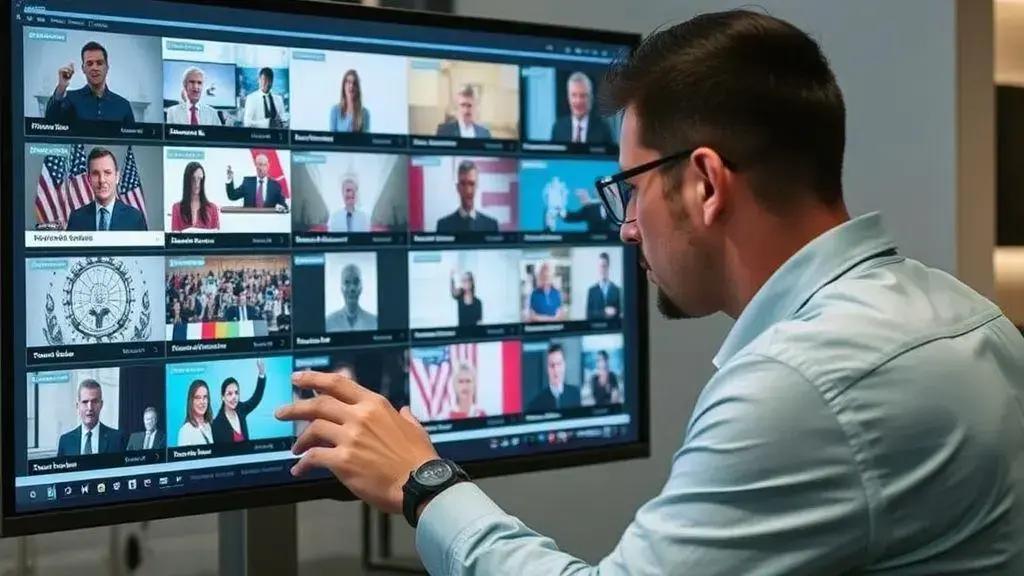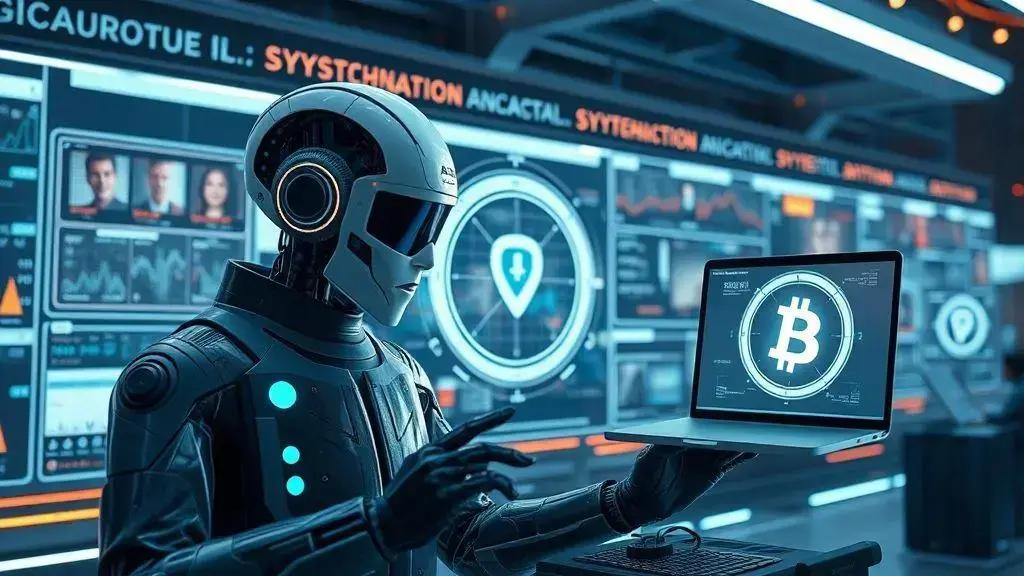Understanding synthetic media verification tools for better content
Understanding synthetic media verification tools is crucial for ensuring content authenticity, combating misinformation, and leveraging emerging technologies like AI and blockchain for accurate media analysis.
Understanding synthetic media verification tools is becoming increasingly crucial in our digital age. Have you ever wondered how we can distinguish between real and manipulated content? Let’s dive into this fascinating topic.
What are synthetic media verification tools?
Synthetic media verification tools are essential in today’s digital media landscape. They help us confirm the authenticity of images, videos, and audio, ensuring what we see and hear is real.
Understanding these tools means recognizing their role in detecting manipulated or deepfake media. With the rise of synthetic content, the need for robust verification methods has never been more critical.
Key Features of Verification Tools
These tools typically offer several key features to help users determine the reliability of content.
- Content analysis: Evaluate the composition of media files to identify signs of editing.
- Metadata examination: Analyze file information to trace origins and modifications.
- AI detection: Use artificial intelligence algorithms to spot anomalies in visual or audio data.
As we become increasingly dependent on digital communication, we must ensure its integrity. Tools like these empower users and organizations, helping to combat misinformation.
The Importance of Verification
Verification is not just about technology; it’s about protecting our understanding of reality. Without these tools, we risk falling prey to fake news and distorted narratives. They provide a safety net, giving users the confidence they can trust the media they consume.
Furthermore, as synthetic media evolves, staying up-to-date with verification capabilities becomes crucial. This ongoing development ensures we can tackle new challenges that arise in the digital space while safeguarding the truth.
As you explore synthetic media, remember the valuable role that verification tools play in maintaining accuracy and credibility in what we encounter online.
Importance of verifying synthetic media

The importance of verifying synthetic media cannot be overstated. As digital content becomes more sophisticated, so do the tactics used to manipulate it. Verification helps us discern fact from fiction.
With synthetic media on the rise, it’s vital to understand why verification matters. These tools safeguard our perceptions and ensure that we consume authentic content. They allow users to make informed decisions about the information they encounter.
Reasons to Verify Synthetic Media
Verifying synthetic media is essential for several reasons:
- Combat misinformation: Verification tools help reduce the spread of fake news.
- Maintain credibility: Organizations that verify their media build trust with their audience.
- Preserve security: Authentic media protects against scams and frauds.
As digital creators, it is our responsibility to provide accurate representations of reality. This responsibility extends to audiences as well; being critical thinkers when consuming media is crucial. Without verification, misleading or deceptive content can create confusion or even panic.
In a digital world dominated by visuals, using synthetic media verification tools not only promotes accuracy but also fosters a culture of honesty. This ultimately empowers users, encouraging them to engage thoughtfully with the content presented to them.
How to choose the right verification tool
Choosing the right verification tool is crucial for anyone dealing with synthetic media. With various options available, it can be difficult to know which one suits your needs best.
Start by considering what type of media you will be verifying. Are you focusing on images, videos, or audio? Different tools specialize in different media types, so selecting one aligned with your specific needs is essential.
Key Factors to Consider
When selecting a verification tool, there are several key factors to keep in mind:
- Accuracy: Look for tools that provide high accuracy rates in detecting alterations.
- User-friendly interface: Choose a tool that is easy to navigate, especially if you are new to verification processes.
- Features: Some tools offer advanced features, such as batch processing, which can save time when verifying multiple files.
Additionally, consider customer support and the availability of resources such as tutorials and documentation. A tool that offers strong support will help you maximize its potential.
Another aspect to evaluate is the technology behind the tool. Does it use artificial intelligence? AI-driven tools often provide more sophisticated analysis, allowing for more reliable verification.
Finally, read user reviews and ratings to gain insight into how well a tool performs in real-world situations. Hearing from other users can help guide your decision and ensure you choose a trustworthy verification tool.
Future trends in synthetic media verification

The future trends in synthetic media verification show exciting developments as technology evolves. As synthetic media becomes more sophisticated, the tools we use to verify authenticity must keep pace. This ongoing evolution is essential for maintaining trust in digital content.
One major trend is the rise of artificial intelligence (AI) in verification tools. AI algorithms are becoming better at recognizing alterations in media files. This improvement allows for more accurate identifications of deepfakes and other manipulated content, ensuring users can rely on what they see and hear.
Emerging Technologies
Several emerging technologies are shaping the landscape of synthetic media verification:
- Blockchain: This technology offers a way to securely log the origins of media files, making it easier to verify authenticity.
- Machine learning: Enhanced machine learning models can learn from vast datasets, improving their ability to detect even the most subtle alterations.
- Cross-referencing: Tools that cross-reference multiple sources or databases can provide a more comprehensive verification process.
As verification tools become more powerful, we may see increased integration with platforms where media is shared. Social media networks and news organizations are likely to adopt verification technologies to ensure the content shared is valid, which will transform how information is consumed online.
Additionally, there will be a growing emphasis on user education. As people become aware of the challenges posed by synthetic media, training programs will likely emerge to help users identify and navigate misleading content effectively. This empowerment is key to fostering a digitally literate society.
In conclusion, understanding synthetic media verification tools is vital for navigating our digital world. As synthetic media technology advances, the need for reliable verification will only increase. By adopting sophisticated tools, such as AI and blockchain technology, users can effectively combat misinformation and maintain the integrity of the content they encounter. Educating users about verification will empower them to discern fact from fiction, fostering a more informed society. Staying aware of future trends will help everyone adapt to the ever-evolving media landscape and ensure credibility in digital communications.
FAQ – Frequently Asked Questions about Synthetic Media Verification
What are synthetic media verification tools?
Synthetic media verification tools help authenticate content by detecting alterations in images, videos, and audio, ensuring what you see is real.
Why is verifying synthetic media important?
Verifying synthetic media is crucial for combating misinformation, maintaining credibility, and preserving security against scams.
How can I choose the right verification tool?
Choose a verification tool by considering its accuracy, user-friendliness, available features, and technology behind it.
What future trends should we expect in synthetic media verification?
Expect advancements in AI, increased use of blockchain, and greater integration with social media platforms for better verification.





